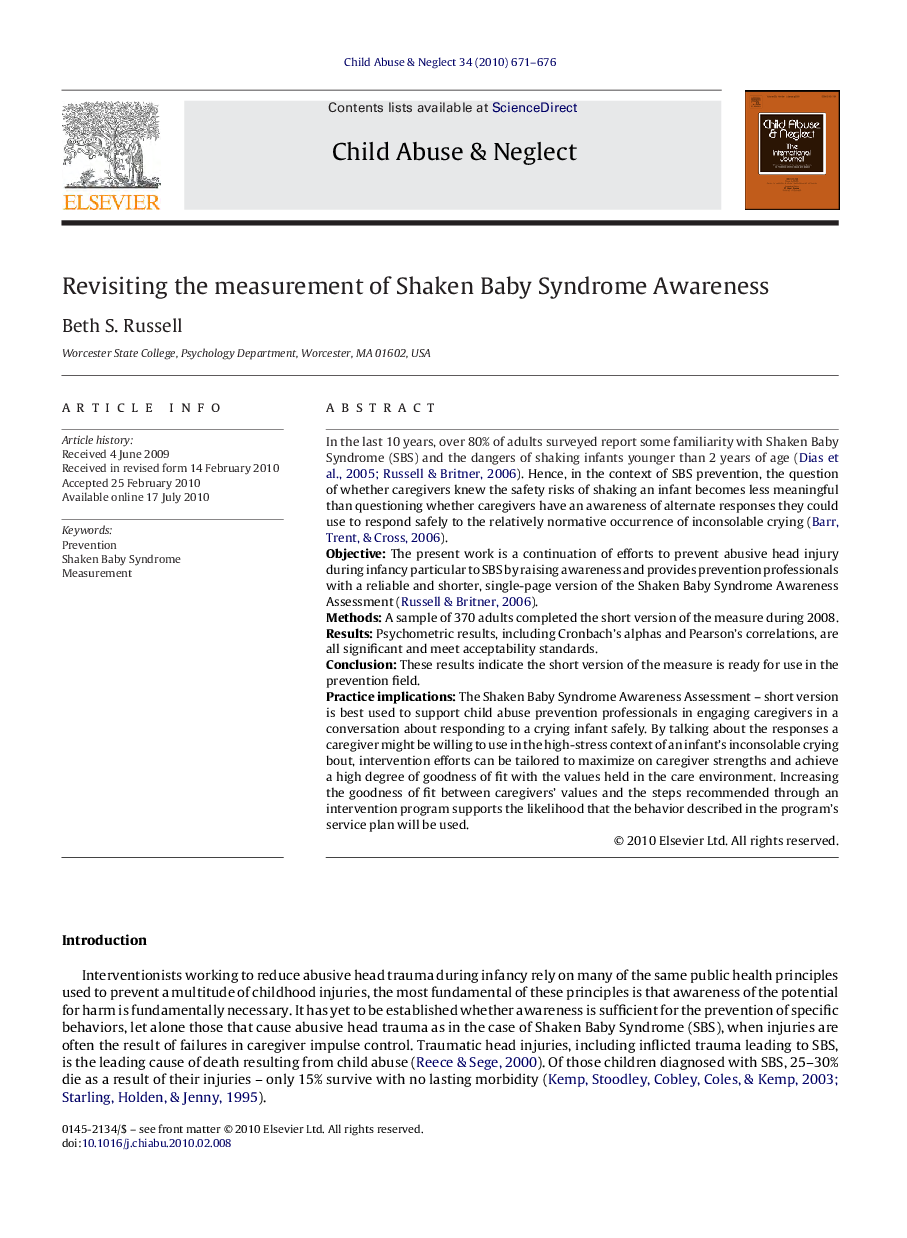| Article ID | Journal | Published Year | Pages | File Type |
|---|---|---|---|---|
| 344955 | Child Abuse & Neglect | 2010 | 6 Pages |
In the last 10 years, over 80% of adults surveyed report some familiarity with Shaken Baby Syndrome (SBS) and the dangers of shaking infants younger than 2 years of age (Dias et al., 2005 and Russell and Britner, 2006). Hence, in the context of SBS prevention, the question of whether caregivers knew the safety risks of shaking an infant becomes less meaningful than questioning whether caregivers have an awareness of alternate responses they could use to respond safely to the relatively normative occurrence of inconsolable crying (Barr, Trent, & Cross, 2006).ObjectiveThe present work is a continuation of efforts to prevent abusive head injury during infancy particular to SBS by raising awareness and provides prevention professionals with a reliable and shorter, single-page version of the Shaken Baby Syndrome Awareness Assessment (Russell & Britner, 2006).MethodsA sample of 370 adults completed the short version of the measure during 2008.ResultsPsychometric results, including Cronbach's alphas and Pearson's correlations, are all significant and meet acceptability standards.ConclusionThese results indicate the short version of the measure is ready for use in the prevention field.Practice implicationsThe Shaken Baby Syndrome Awareness Assessment – short version is best used to support child abuse prevention professionals in engaging caregivers in a conversation about responding to a crying infant safely. By talking about the responses a caregiver might be willing to use in the high-stress context of an infant's inconsolable crying bout, intervention efforts can be tailored to maximize on caregiver strengths and achieve a high degree of goodness of fit with the values held in the care environment. Increasing the goodness of fit between caregivers’ values and the steps recommended through an intervention program supports the likelihood that the behavior described in the program's service plan will be used.
